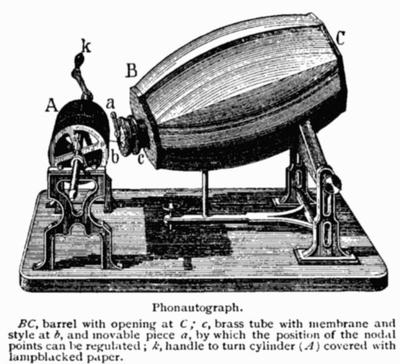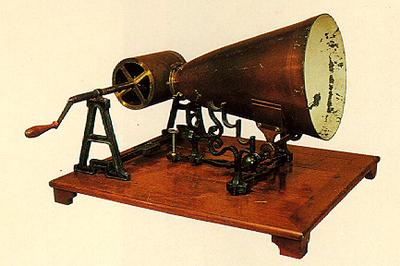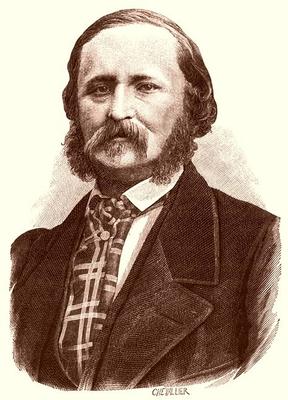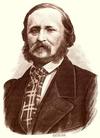Édouard-Léon Scott
by Chris Juried
(Florida)
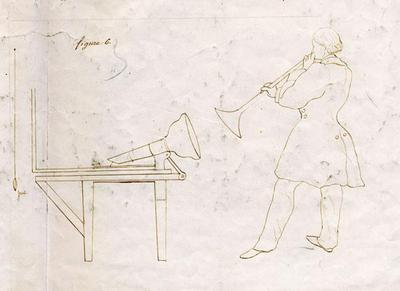
Leon Scott with his Phonautograph
Édouard-Léon Scott de Martinville (1817-1879) is credited with the invention of the phonautograph. The phonautograph is the first instrument containing the capability to both record sound and play back the recording. From what we understand from Scott’s writings, Scott claims he had the idea for the phonautograph in 1853 or 1854. Scott first went on record in January of 1857 by releasing a document dubbed, “Principes de Phonautographie”, with the French Academy of Sciences. The document would contain his plan to record sound waves on lampblacked glass plates using a mechanism based on the human ear: a funnel, two membranes separated by an airtight space, and a stylus attached to the second membrane. The documents conclusion contains two plates of phonautograms "dating back three years," which were supposedly his very first experiments.
In March of 1857 a document coined, “Phonautograph Patent”, which was based around the phonautograph’s basic design, described in the "Principes de Phonautographie", were ready peer-review. The document added a sample phonautogram along with drawings of greater detail.
Two years later, during July of 1859, Scott published “Certificate of Addition”. This paper would describe an updated configuration with paper, wrapped around a hand-cranked cylinder, instead of a plate of glass, one membrane instead of two, and a tuning fork or chronometer attachment to record time-illustrated by yet another phonautogram.
This design was an effort on Scott’s part along with Rudolph Kœnig, an instrument-maker, with which he collaborated with for this updated design. In the same document, Scott explores the possibility of applying phonautography to the nuances of dramatic speech.
In October of 1857, before the Société d'Encouragement which had funded his first phonautograph patent, Scott gave a talk coined “Fixation Graphique de la Voix”. Scott’s audience was primarily based around the layman and as a result his lecture was executed with less technical detail than he would have expressed in his sealed packet or his patent paperwork, which would exclude the theory of his underlying work.
During July of 1861, Scott presented his latest findings to the French Academy of Sciences to defend his priority of invention against a foreign scientist. Scott had parted ways with Rudolph Kœnig and reverted to an imitation of the structure of the ear, going so far as to experiment with an artificial chain of ossicles. Another innovation was an “amplifier lever” for increasing the size and legibility of inscriptions. Scott included a page of diagrams explaining how to “read” waveforms and a sampling of recent phonautograms, including Au Clair de la Lune.
Comments for Édouard-Léon Scott
|
||
|
||
